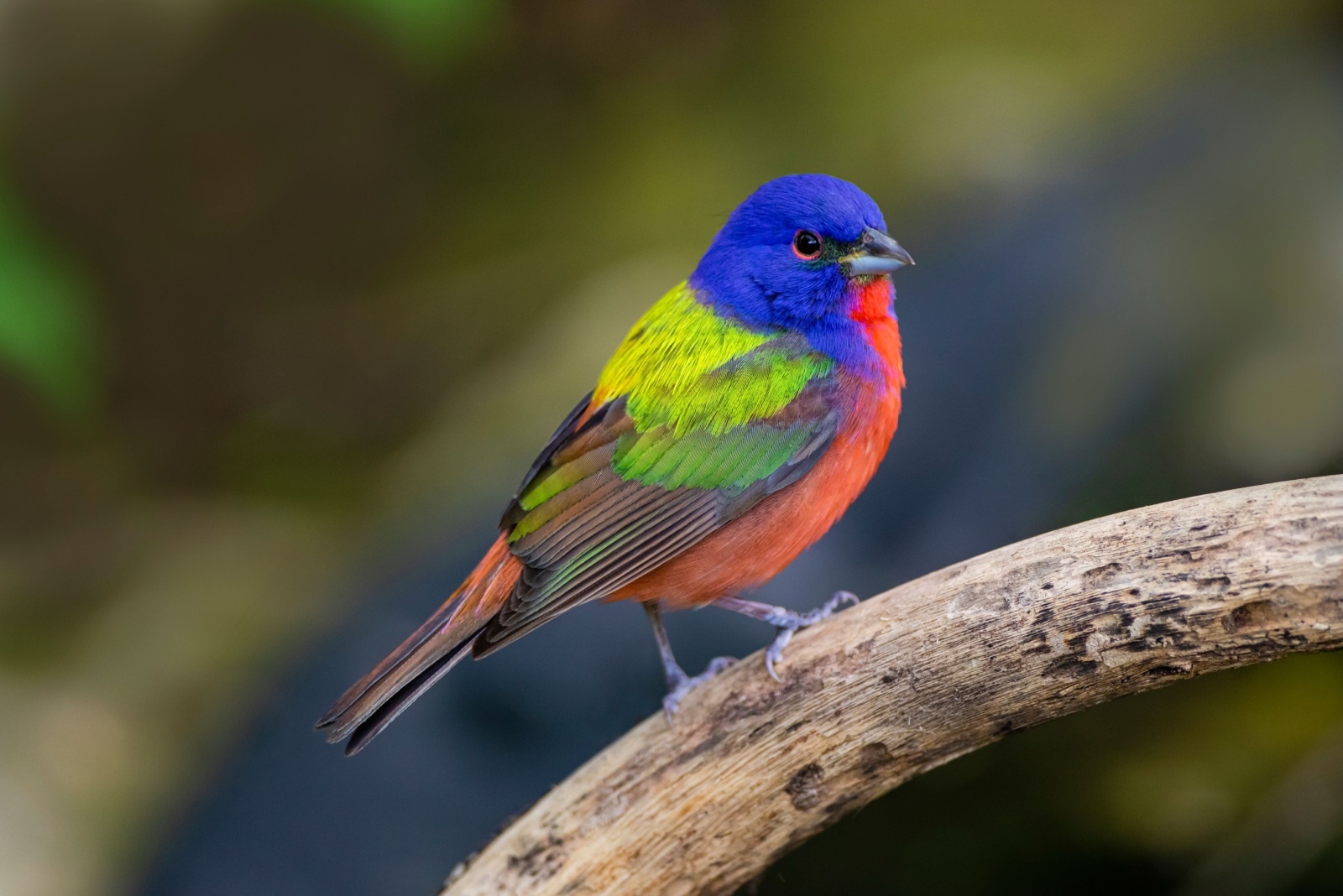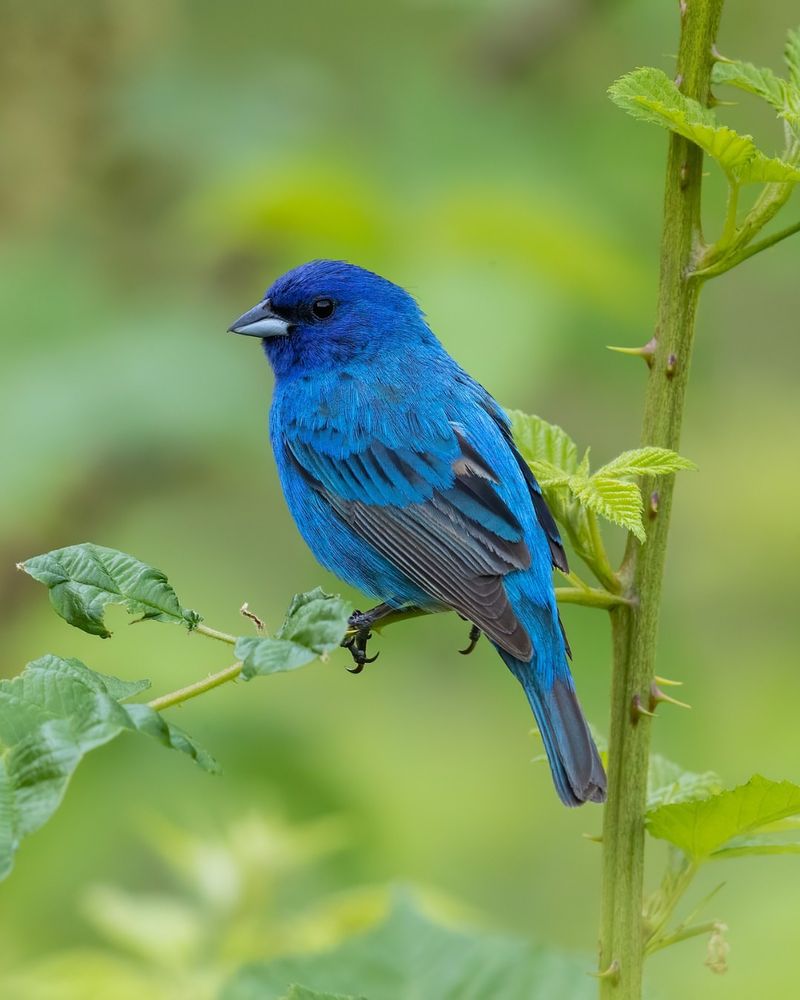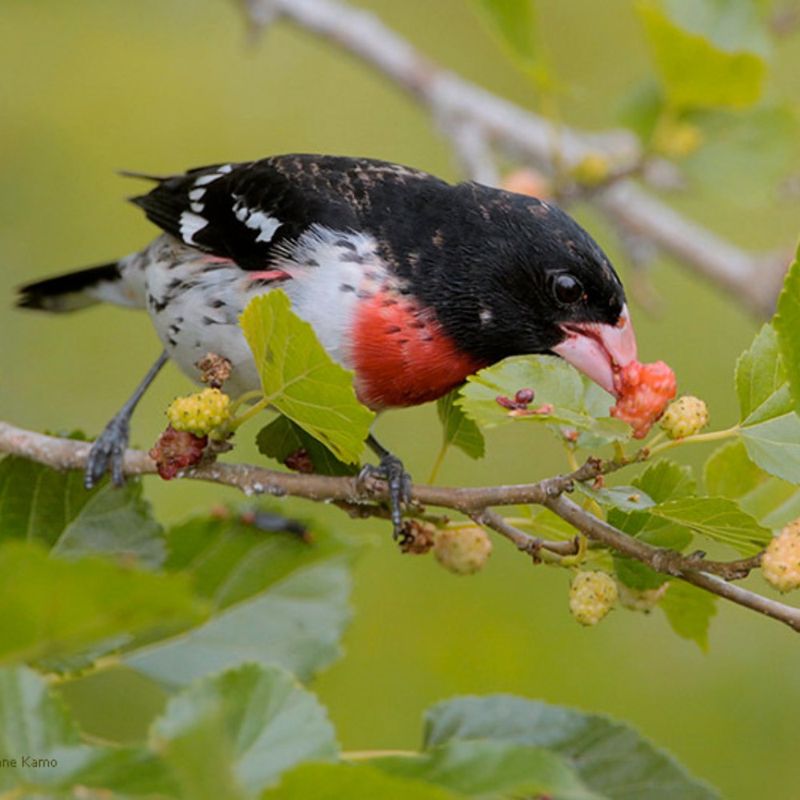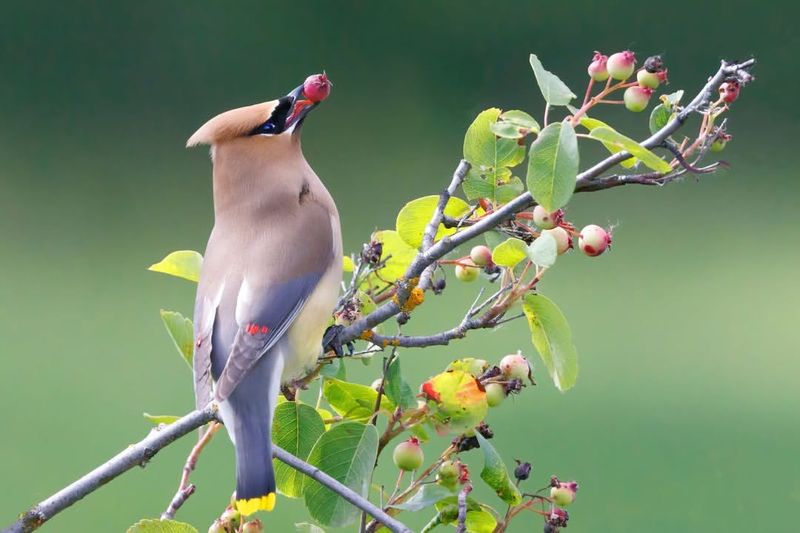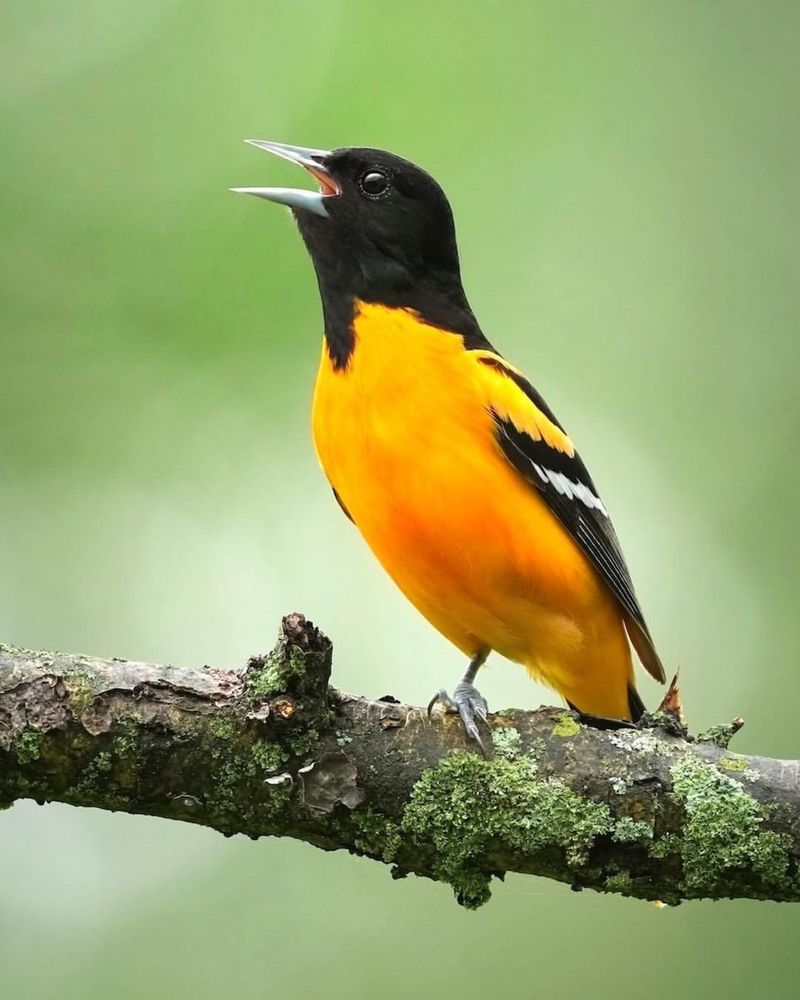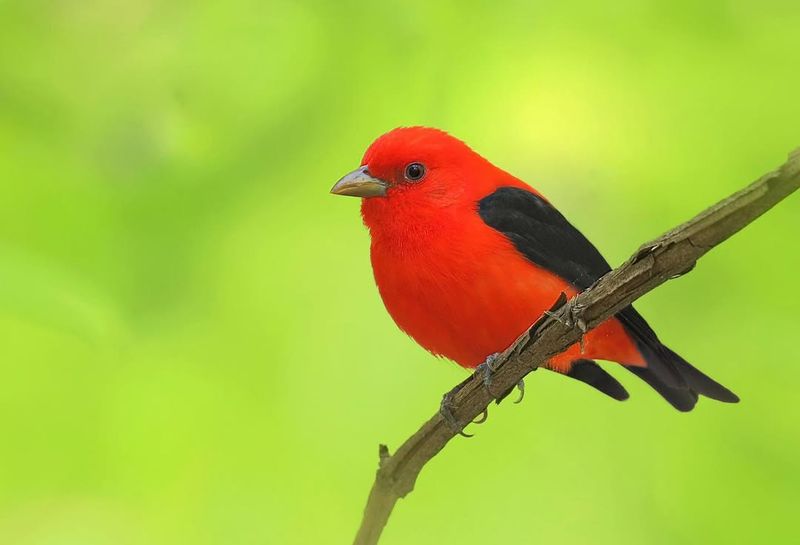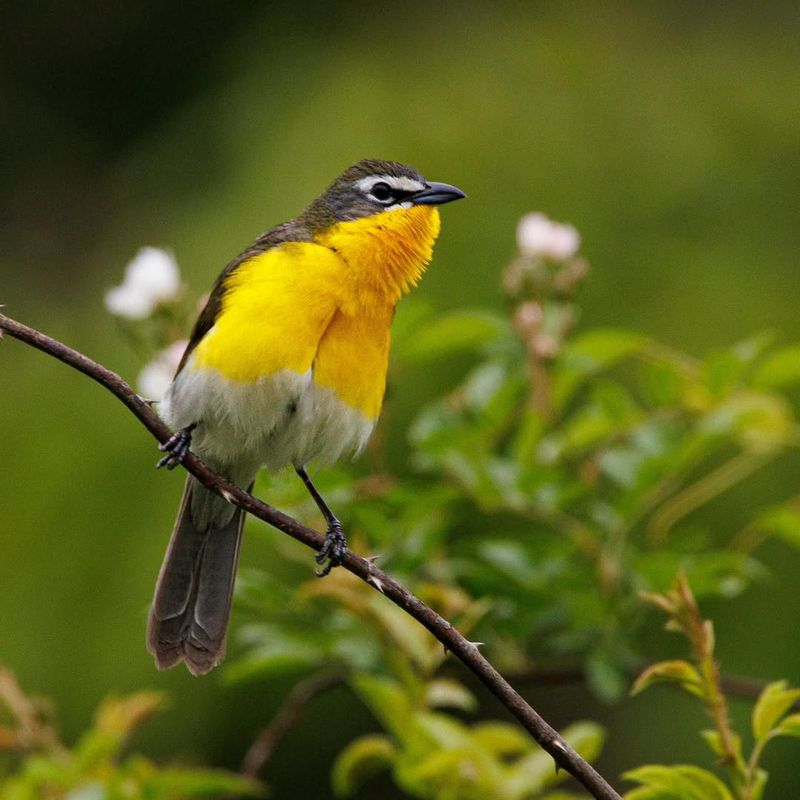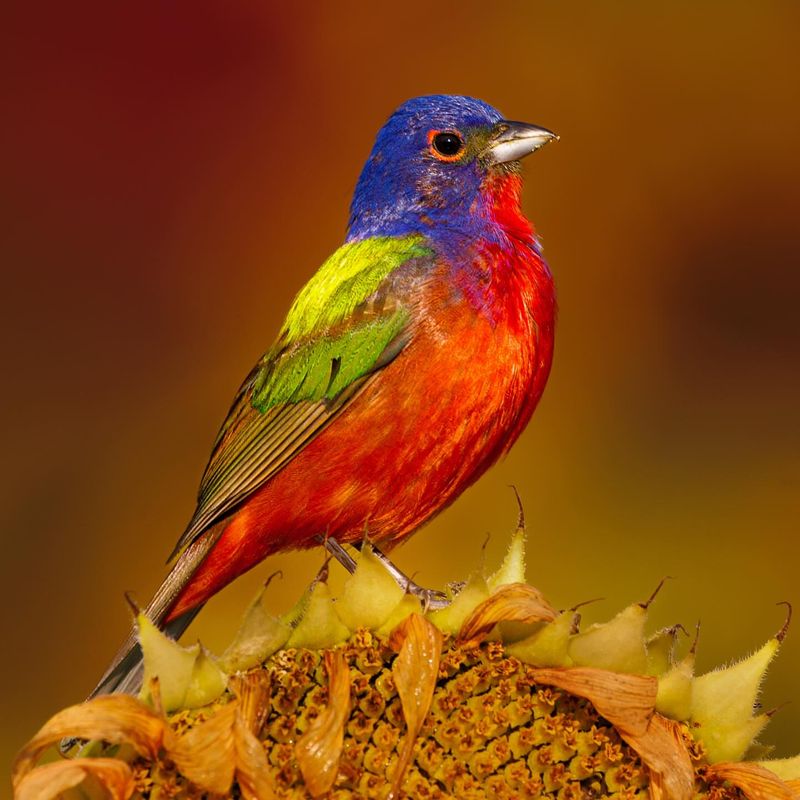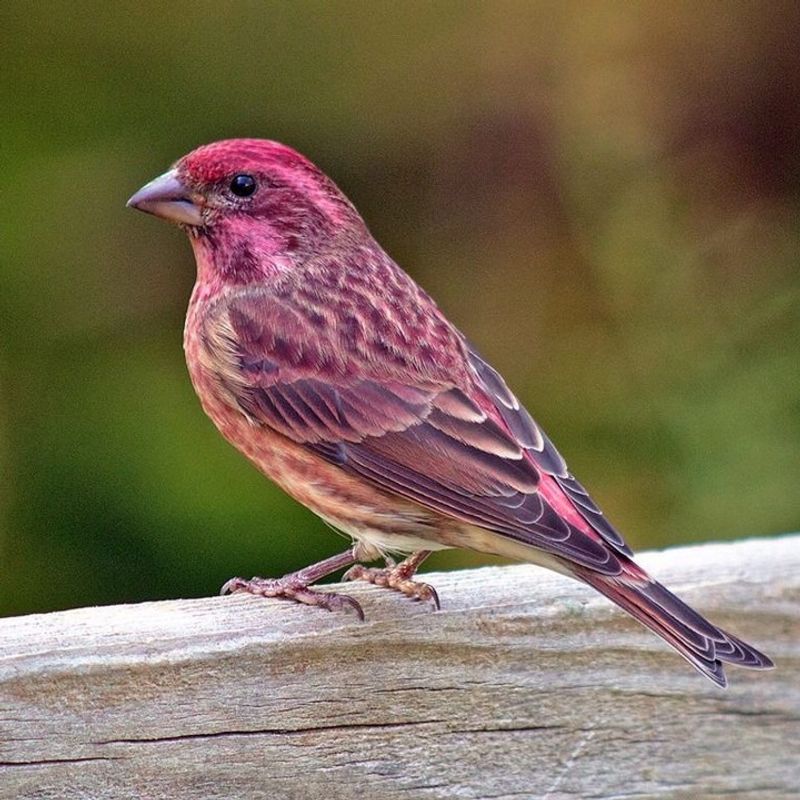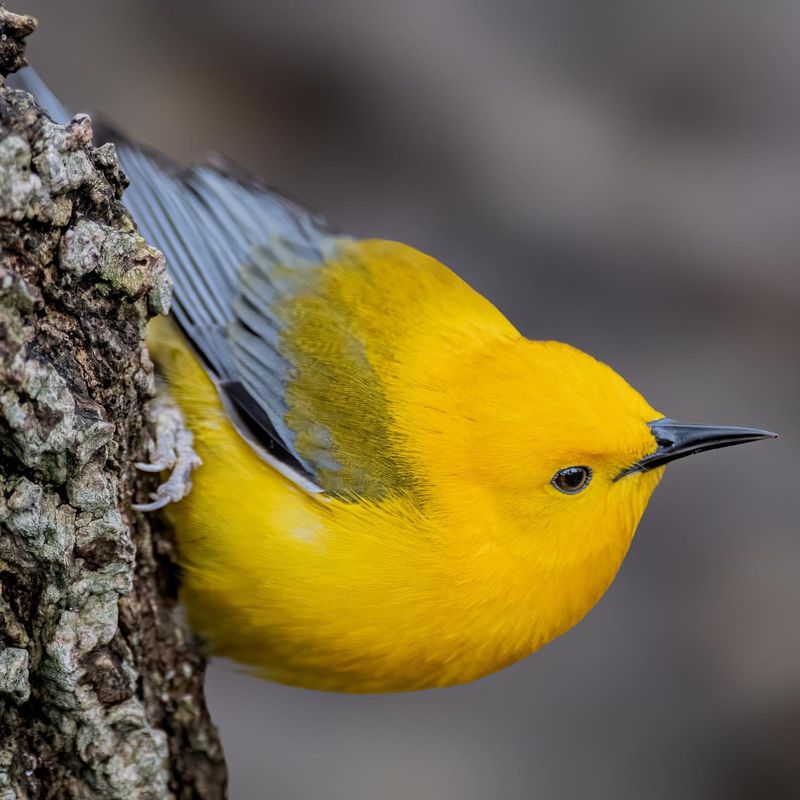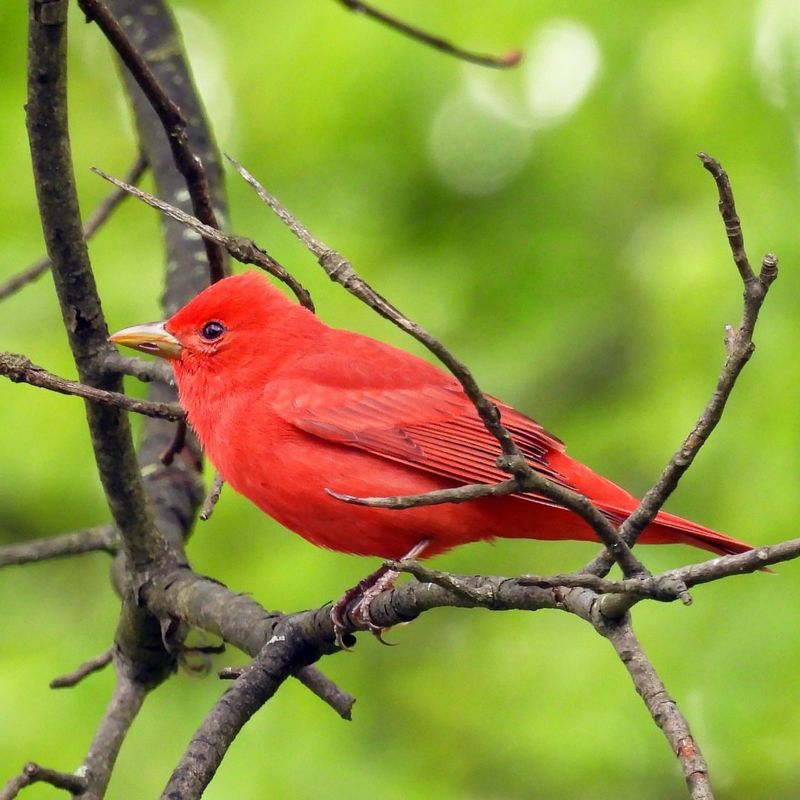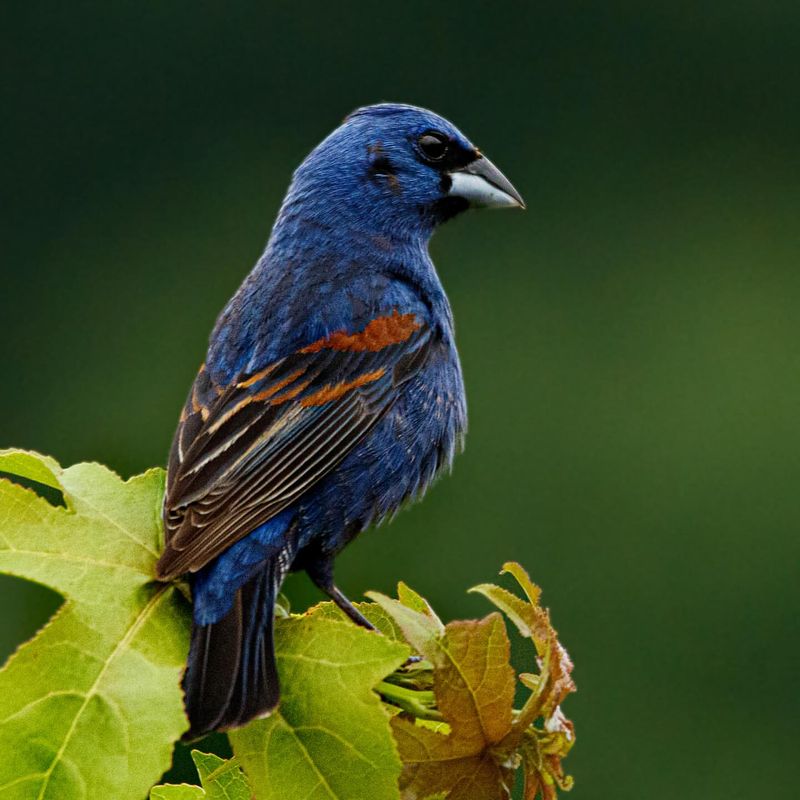Virginia’s backyards are secret havens for some of North America’s most colorfully surprising birds. Beyond the usual cardinals and blue jays, a rainbow of feathered visitors might be perching in your trees or visiting your feeders right now.
Grab your binoculars and discover these vibrant neighbors that bring unexpected splashes of color to your outdoor space.
1. Indigo Bunting: Electric Blue Jewel
Male Indigo Buntings transform into dazzling electric-blue showstoppers during breeding season, creating a tropical vibe in Virginia yards. Their color isn’t actually pigment but a trick of light reflecting off feather structures.
Females remain a modest brown, making the males’ brilliant appearance even more striking by comparison. Look for these stunners from late April through September, especially at feeders stocked with small seeds or near brushy field edges.
2. Rose-breasted Grosbeak: Pink-Bibbed Wonder
Sporting a distinctive black-and-white tuxedo topped with a rosy-red triangular bib, male Rose-breasted Grosbeaks stop backyard traffic during spring migration. Their chunky bills easily crack seeds while their sweet robin-like song fills morning air.
Females lack the flashy bib, wearing streaked brown plumage instead. These eye-catching visitors typically pass through Virginia in April-May and again in September, bringing a brief but unforgettable splash of color to feeders.
3. Cedar Waxwing: Masked Berry Lover
Cedar Waxwings look like they’ve stepped out of a fashion magazine with their silky, buff-colored plumage, black masks, and yellow-tipped tails. The real surprise? Many sport bright red waxy wingtips that look like drops of sealing wax.
Flocks descend on berry-producing trees and shrubs, sometimes appearing drunk after eating fermented fruit! Plant serviceberry, dogwood, or winterberry in your yard to attract these sophisticated birds, especially during winter and early spring when they travel in social groups.
4. Baltimore Oriole: Orange Flame In The Treetops
Flashing like flames through the canopy, male Baltimore Orioles bring tropical flair to Virginia with their brilliant orange-and-black plumage. Their distinctive hanging sock-like nests dangle from high branches, woven with remarkable precision.
Females sport a more subtle yellowish-orange but are still easily identifiable. Attract these dazzling visitors with orange halves, grape jelly, or nectar feeders placed high in your yard. They typically arrive in late April and may stay through early fall if food sources remain plentiful.
5. Scarlet Tanager: Hidden Forest Red
Like a cardinal dipped in midnight ink, male Scarlet Tanagers combine shocking crimson bodies with jet-black wings and tails. Despite their show-stopping appearance, these birds remain surprisingly hard to spot as they prefer high forest canopies.
Their rasping, robin-like song often gives away their presence before you see them. Females wear an olive-yellow that provides excellent camouflage. Lucky Virginia backyard birders might glimpse these stunners during summer months, especially in yards bordering woodlands or featuring mature oak trees.
6. Yellow-Breasted Chat: Clownish Yellow Ventriloquist
Yellow-breasted Chats are the comedians of Virginia’s bird world, sporting bright yellow bellies, white spectacles, and oversized personalities. Larger than typical warblers, these birds perform bizarre aerial displays while producing an astonishing variety of calls – whistles, cackles, and even cat-like sounds.
Finding them requires patience as they prefer dense thickets and shrubby areas. Plant native shrubs like blackberry or wild plum to create chat-friendly habitat. These vocal performers typically arrive in April and depart by September after entertaining lucky observers with their antics.
7. Painted Bunting: Rainbow Visitor
Occasionally wandering into southern Virginia, Painted Buntings look like escapees from a tropical aviary. Males flaunt a kaleidoscope of colors – blue heads, red underparts, and green backs – that seem too vivid to be real.
Females wear a uniform bright green that’s beautiful in its own right. These living rainbows are rare but possible visitors to seed feeders, especially in coastal areas. Their presence is increasing in Virginia as climate patterns shift, making your chances of spotting one better each year, particularly during late spring wanderings.
8. Purple Finch: Raspberry-Dipped Songster
Despite their name, Purple Finches aren’t truly purple – males look like they’ve been dipped in raspberry juice, with the reddish color washing over their heads and upper bodies. Their sweet, warbling song adds charm to cold winter days in Virginia backyards.
Females show distinct brown and white streaking without the fruity hue. These northern visitors typically appear at Virginia feeders from October through April, often in small flocks. Black oil sunflower seeds are their favorite, and platform feeders will give you the best views of their unexpected coloration.
9. Prothonotary Warbler: Golden Swamp Ghost
Glowing like candles in Virginia’s swampy forests, Prothonotary Warblers bring a splash of golden-yellow brilliance to wet woodland edges. Their name comes from yellow-robed Catholic church officials called prothonotaries, reflecting their regal appearance.
Unlike most warblers, these golden beauties nest in tree cavities, sometimes visiting yards near water sources. Their sweet, ringing “tweet-tweet-tweet-tweet” calls announce their presence from April through August. Plant native shrubs near a water feature to increase your chances of attracting these luminous visitors.
10. Summer Tanager: All-Red Phenomenon
Unlike their scarlet cousins, male Summer Tanagers are completely rose-red from head to tail – the only entirely red bird in North America. Their habit of catching bees and wasps in mid-air has earned them the nickname “bee bird” among longtime observers.
Females wear a warm mustard-yellow that helps them remain hidden while nesting. These stunning birds prefer open woods and can appear in Virginia backyards from late April through September, especially those with mature pines nearby. Their distinctive “picky-tuck-tuck” calls often reveal their presence before visual confirmation.
11. Blue Grosbeak: Navy-Blue Surprise
Blue Grosbeaks bring a deeper, richer blue than their bunting relatives, with chestnut-colored wing bars adding elegant contrast. Their massive silvery bills easily crack the toughest seeds while their melodious warbling song carries across Virginia fields and yard edges.
Females wear a rich cinnamon-brown that’s attractive in its understated way. These stunning birds typically arrive in Virginia by early May, preferring brushy areas and field edges. Maintaining unmowed sections in your yard and offering mixed seeds can help attract these increasingly common but still surprising blue visitors through summer.

